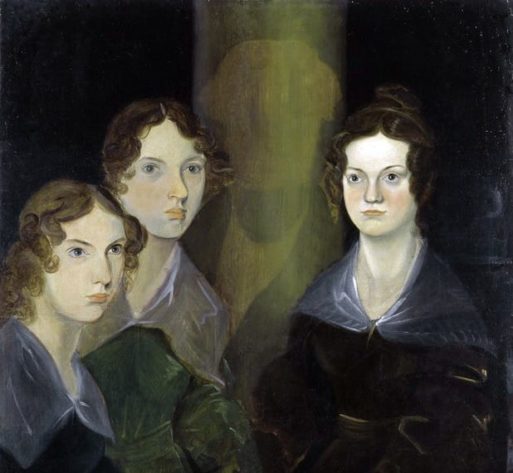
In England in the 1840s, one of the most revered literary families was the Bronte sisters, Charlotte Bronte, Emily Bronte and Anne Bronte. The parents, Patrick and Maria, had five girls and one boy. Their mother died while all the children were young. The oldest two sisters, Maria and Elizabeth, died of tuberculosis after an outbreak at their primary school.

Credit: goodreads.com
The remaining siblings were very close. They wrote poems and stories and wrote and performed plays to amuse themselves. Charlotte Bronte went to school for a short time and taught her younger sisters at home.
In their teens, Charlotte and Emily went to Brussels to study. Anne stayed in England and worked as a governess, a position she did not enjoy. Reunited at their home in Yorkshire, the sisters rekindled their interest in writing. Among other works, Charlotte Bronte wrote “Jane Eyre;” Emily Bronte wrote “Wuthering Heights;” and Anne Bronte wrote “Agnes Grey” and “The Tenant of Wildfell Hall.” Anne’s books were not as well-known as those of her sisters, both because they were perhaps not as well written and because Charlotte Bronte requested the works not be republished after Anne’s death. According to Wikipedia, Charlotte wrote to the publisher, “it [“The Tenant of Wildfell Hall”] hardly seems to me desirable to preserve … the choice of subject in that work is a mistake.”
Not long after the publication of “Wuthering Heights,” Emily Bronte died of tuberculosis. Anne was also suffering from the same illness. Her health began to decline quickly as well. She traveled to a warmer climate, but when the doctor told her there was nothing more that could be done, she came home to be with her father and sister.
Deeply spiritual, Anne did not fear death. She did feel sorry for her father, who would soon lose all but one of his children. She also pitied Charlotte, because she knew Charlotte had considered Anne to be her closest companion.
After Anne died, Charlotte Bronte wrote a short poem about her. The poem shifts around from one grief-stricken reaction to another. In the first stanza, she wishes for death. Life without Anne seems unbearable.
In the second stanza, she remembers how Anne suffered and writes about her relief when Anne finally took her last breath:
“Calmly to watch the falling breath,
Wishing each sigh might be the last;
Longing to see the shade of death
O’er those beloved features cast.”
The third stanza thanks God for Anne’s presence in her life, and the fourth stanza describes how she and her father must force themselves to go on alone without Anne.
Charlotte Bronte also mourned her loss by working on fiction again. According to the website The Bronte Family, Charlotte wrote to her publisher, “Whatever now becomes of the work, the occupation of writing it has been a boon to me. It took me out of dark and desolate reality into an unreal but happier region.” None of Charlotte’s more recent novels enjoyed the popularity of “Jane Eyre,” but they did help her through her loss.
Meanwhile, Charlotte’s father began to bring a friend around for meals. He and Charlotte fell in love and got married. Their happiness, however, was short lived. Like her sisters before her, Charlotte contracted tuberculosis. She died just a year after her wedding. At the time of her death, she was pregnant with her first child.
Charlotte Bronte suffered a great deal of loss in her life, and her sadness may well have inspired her fiction and poetry. Her early death was a loss to the literary world.

 “On the Death of Anne Bronte” by Charlotte Bronte
“On the Death of Anne Bronte” by Charlotte Bronte


 Forest Bathing Eases Grief by Soaking in Nature
Forest Bathing Eases Grief by Soaking in Nature
 The Spiritual Symbolism of Cardinals
The Spiritual Symbolism of Cardinals
 Meaning-Focused Grief Therapy: Imaginal Dialogues with the Deceased
Meaning-Focused Grief Therapy: Imaginal Dialogues with the Deceased














